It was tons of fun to make - here are the graphics we used for each month:
Cover
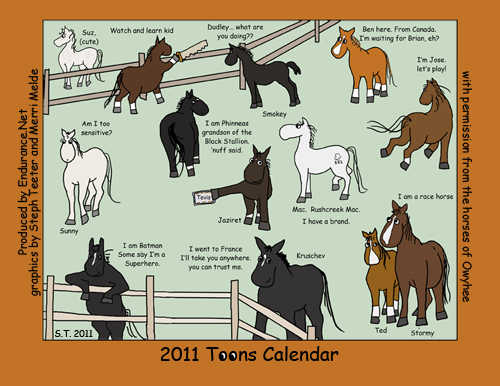
January
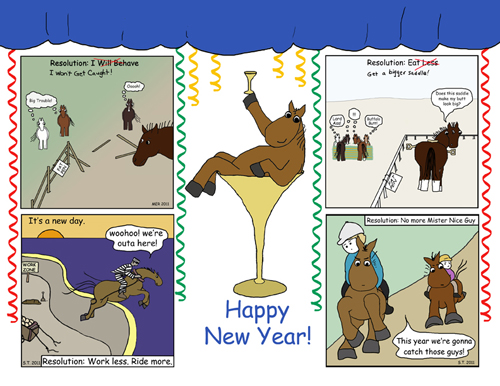
February
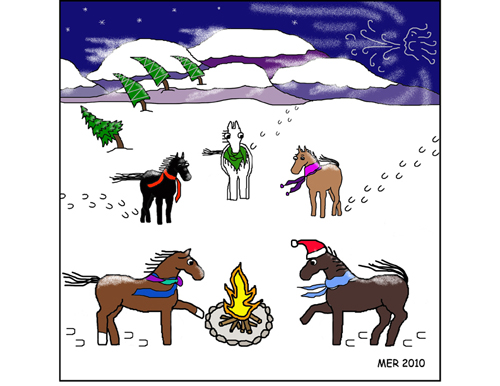
March
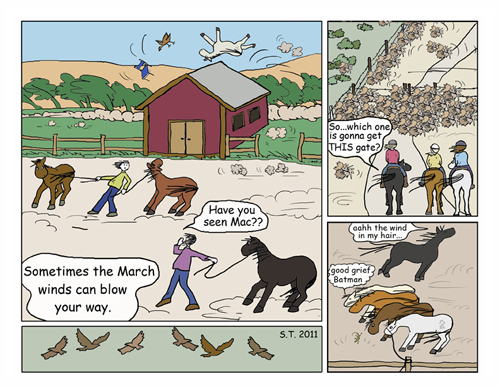
April
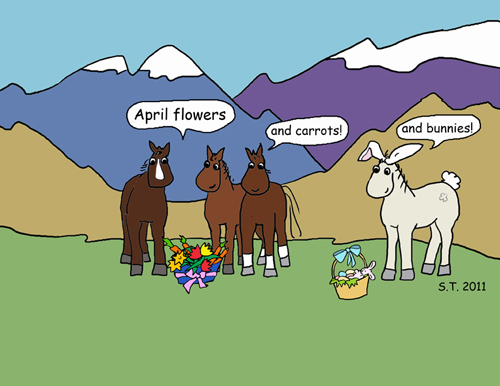
May
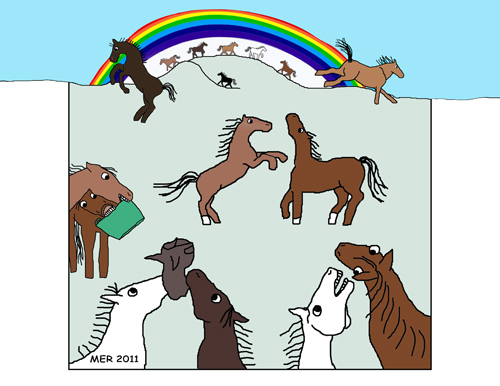
June
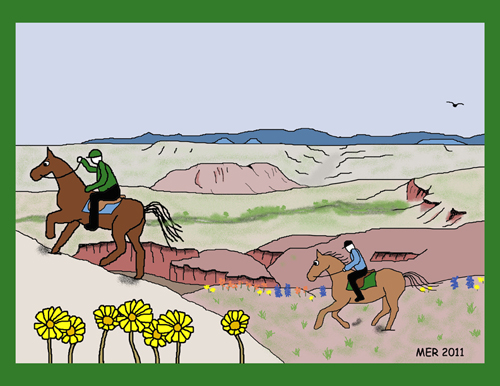
July
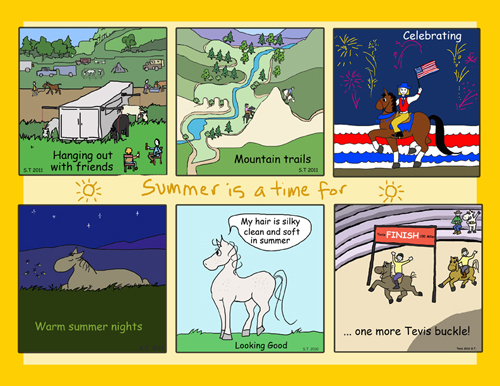
August
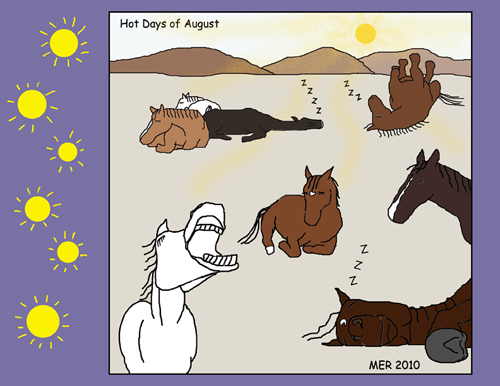
September
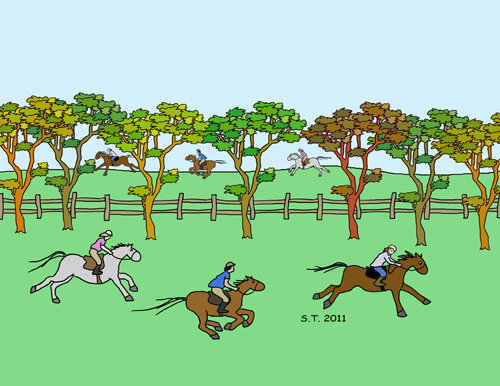
October
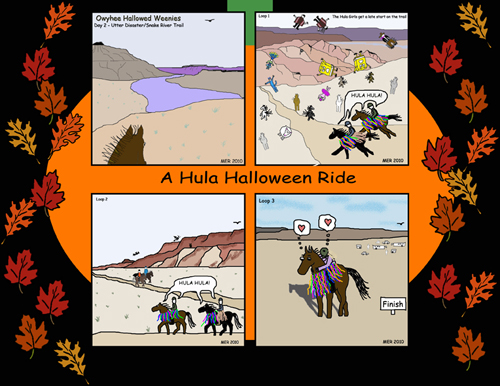
November
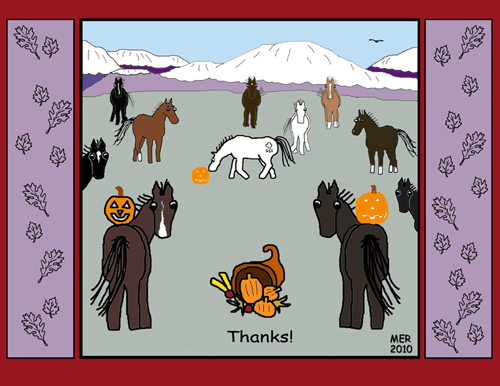
December
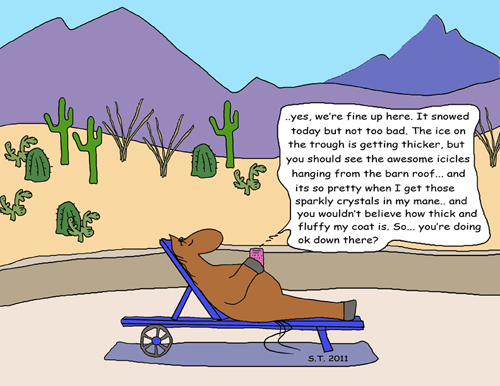
It was tons of fun to make - here are the graphics we used for each month:













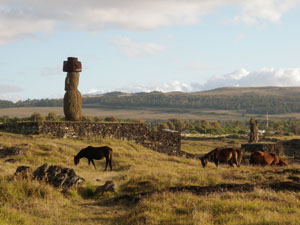 One of the most amazing things about this place is all of the horses! They are everywhere, on every part of the island. The horses were introduced in the early 1900's, and most accounts say there are currently around 1000 horses roaming the island. They roam through town, munching on the grass along the roads, wandering through people's yards, grazing on the grass in front of the church. Wandering at leisure through the archeological sites, scratching their hides on the ancient moai statues. I've never seen anything like it!
One of the most amazing things about this place is all of the horses! They are everywhere, on every part of the island. The horses were introduced in the early 1900's, and most accounts say there are currently around 1000 horses roaming the island. They roam through town, munching on the grass along the roads, wandering through people's yards, grazing on the grass in front of the church. Wandering at leisure through the archeological sites, scratching their hides on the ancient moai statues. I've never seen anything like it!And, supposedly, every horse is owned by somebody. They all have brands. Though they don't seem confined by any fences or barriers, there do seem to be 'territories'. I watched several herds interacting once - the stallions posturing and squealing. Mares chasing others away. Younger horses playing attack and run games.
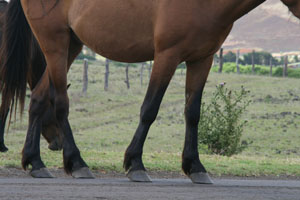 Steve and Dinah and I took an afternoon drive one day - just to check out the horses. There were definitely dominant strains in different areas. One group had a large number of white faces (I think we identified the bay stallion with a white face). Another group had a large number of roans. I wanted to see their feet too - there are some horses that get shod, but most of the stay barefoot all of their lives. They all have rock hard feet - though I was surprised at how poorly a lot of the feet were shaped. There were some with classic 'mustang feet' - and there were also a lot with very long, overgrown toes. This was a bit of a surprise. But we also noticed that many of the horses were in poor health - and these also tended to have the poorest feet.
Steve and Dinah and I took an afternoon drive one day - just to check out the horses. There were definitely dominant strains in different areas. One group had a large number of white faces (I think we identified the bay stallion with a white face). Another group had a large number of roans. I wanted to see their feet too - there are some horses that get shod, but most of the stay barefoot all of their lives. They all have rock hard feet - though I was surprised at how poorly a lot of the feet were shaped. There were some with classic 'mustang feet' - and there were also a lot with very long, overgrown toes. This was a bit of a surprise. But we also noticed that many of the horses were in poor health - and these also tended to have the poorest feet.
 We found out later that many of the horses are suffering from ingesting a plant that was introduced as a control for soil erosion. Chocho - Crotolaria grahamiana - a member of the lupine family is extremely toxic to horses and cattle. If they eat enough of it they will eventually die - they can become blind, suffer neurological damage, and eventually liver failure. In one area in particular we saw several very ill looking horses. Too many horses, not enough forage, they will eat whatever they can find.
We found out later that many of the horses are suffering from ingesting a plant that was introduced as a control for soil erosion. Chocho - Crotolaria grahamiana - a member of the lupine family is extremely toxic to horses and cattle. If they eat enough of it they will eventually die - they can become blind, suffer neurological damage, and eventually liver failure. In one area in particular we saw several very ill looking horses. Too many horses, not enough forage, they will eat whatever they can find.
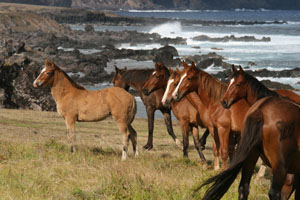 And as far as breed - phenotype - it was really a mix! Many of them looked like the criollo types (South America's native horse) - not too large, dense bone, good size feet - not heavily muscled, rather plain heads. Mostly a mix of chestnuts and bays, with a few strong roan strains showing in places. We did see a few odd ones that stood out! One gray draft or cob type stallion - he definitely looked out of place!
And as far as breed - phenotype - it was really a mix! Many of them looked like the criollo types (South America's native horse) - not too large, dense bone, good size feet - not heavily muscled, rather plain heads. Mostly a mix of chestnuts and bays, with a few strong roan strains showing in places. We did see a few odd ones that stood out! One gray draft or cob type stallion - he definitely looked out of place!
I had heard that most of the people still used horses for transportation. I think this is changing though. There are many more cars on the island now - even in the last 2 or 3 years more people are getting around by car or motorcycle. Though its still a common site for kids, adults, teens to be riding horses down the streets - sometimes with saddles, sometimes not. sometimes bridles, sometimes rope tied around the lower jaw and looped for reins. These people sit a horse like they were born on one. My first night here I woke up a few times to the sound of a horse galloping up the road, somebody going home after a night working or socializing in town.
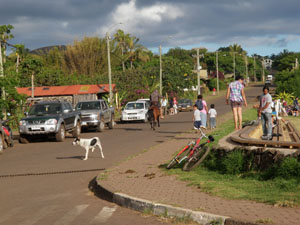
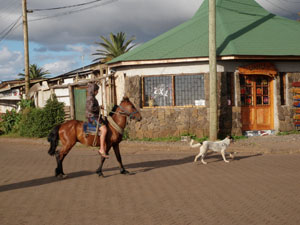
And there are also lots of dogs! They were all friendly, but many seemed homeless - following tourists around town looking for handouts. Chasing the occasional horse, for fun or as a 'job'. One dog was barking and barking and harassing a horse as his rider (a youth) headed up the street from the harbor - the boy stopped his horse, backed up to the dog, the horse struck out with a hind foot giving the dog a glancing blow - the dog yelped off - and the horse and rider continued up the road. So there!
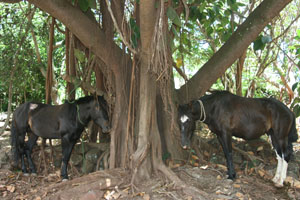 The islanders seem to consider the horses pests, yet they are very proud to own them and ride them and brag about the number of horses that they own. At some point the number of horses will have to be brought under control I suspect. There was a veterinarian that came to work the endurance ride (next story!) who is also a professor at a University in Chile. He is conducting a study on the island horses - the first ever done. He took samples of all the horses that were rounded up for the ride - skin, hair, blood, ear swabs - to study their chemistry. Effects of the crotolaria plant, general health. The horses are simply overgrazing the island. Attempts to re-establish trees and natural ground cover on the island are futile until the horses can be contained, or at least excluded from certain areas.
The islanders seem to consider the horses pests, yet they are very proud to own them and ride them and brag about the number of horses that they own. At some point the number of horses will have to be brought under control I suspect. There was a veterinarian that came to work the endurance ride (next story!) who is also a professor at a University in Chile. He is conducting a study on the island horses - the first ever done. He took samples of all the horses that were rounded up for the ride - skin, hair, blood, ear swabs - to study their chemistry. Effects of the crotolaria plant, general health. The horses are simply overgrazing the island. Attempts to re-establish trees and natural ground cover on the island are futile until the horses can be contained, or at least excluded from certain areas.
But it sure is beautiful to see the horses on the landscape!
Next - EnduranceX does polo and endurance!
 "To me the island is not an image that repeats itself every second. Each place has an image that changes every second... now we are here and it looks like this, in a half hour it will look different.
"To me the island is not an image that repeats itself every second. Each place has an image that changes every second... now we are here and it looks like this, in a half hour it will look different. "There is a game between the clouds and the sun and the winds and the rains that are always changing - and that is what attracts me to loving this island so much."
Mike Rapu
 Rapa Nui, Easter Island, Isle de Pascua... the Navel of the World. The first impression I had of the island was of the light - the sensation that the sun was shining through the air, not just lighting the landscape, but lighting the air and the sky as well. It's a fairly barren piece of land - a little bump of volcanic rock and ash that began forming 3 million years ago - exposed to the elements, the wind, rain, sun, sea, shaped by the scarce plant and animal life that found its way there by air or by sea. And further shaped by the presence of humans since the first Polynesians landed on the shores sometime around the 700's.
Rapa Nui, Easter Island, Isle de Pascua... the Navel of the World. The first impression I had of the island was of the light - the sensation that the sun was shining through the air, not just lighting the landscape, but lighting the air and the sky as well. It's a fairly barren piece of land - a little bump of volcanic rock and ash that began forming 3 million years ago - exposed to the elements, the wind, rain, sun, sea, shaped by the scarce plant and animal life that found its way there by air or by sea. And further shaped by the presence of humans since the first Polynesians landed on the shores sometime around the 700's.
The story of the people of the island, the Rapa Nui, is astounding. 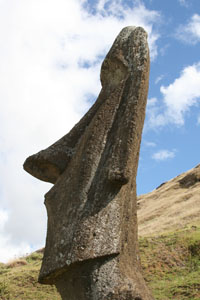 A society that grew from a handful of people that had traveled by sea, over 2000 miles from the nearest inhabited land, bringing with them, by boat, everything they need to start anew - plants, animals, tools and survival knowledge laced tightly with cultural beliefs. When the first people landed, the island was covered with lush vegetation, 70% of the land covered by palm trees and other native tree species.
A society that grew from a handful of people that had traveled by sea, over 2000 miles from the nearest inhabited land, bringing with them, by boat, everything they need to start anew - plants, animals, tools and survival knowledge laced tightly with cultural beliefs. When the first people landed, the island was covered with lush vegetation, 70% of the land covered by palm trees and other native tree species.
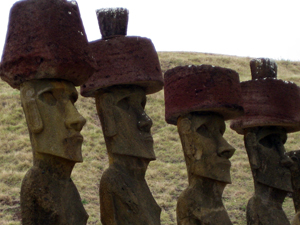 The island population peaked at around 14,000 people at the height of the Moai period. Twelve tribes across the island competed with each other for the diminishing resources, and the drive for dominance and prosperity among the tribes was most embodied by the obsession with erecting larger and grander Moia with each successive generation, appealing to the gods for protection of their villages and for the gift of life sustaining resources, and intimidating other tribes with their own displays of power.
The island population peaked at around 14,000 people at the height of the Moai period. Twelve tribes across the island competed with each other for the diminishing resources, and the drive for dominance and prosperity among the tribes was most embodied by the obsession with erecting larger and grander Moia with each successive generation, appealing to the gods for protection of their villages and for the gift of life sustaining resources, and intimidating other tribes with their own displays of power.
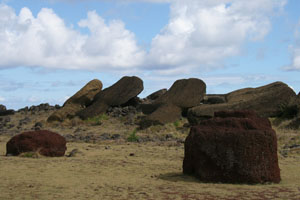 As the population grew, the food and resources became scarcer and the tribes waged war against each other - killing, cannibalizing, and destroying village structures... and the ultimate victory was in the toppling of the village Moia. These huge monolithic stone structures were pulled over, face down, as a symbol of victory. All of the Moia had been toppled by the mid 1800's.
As the population grew, the food and resources became scarcer and the tribes waged war against each other - killing, cannibalizing, and destroying village structures... and the ultimate victory was in the toppling of the village Moia. These huge monolithic stone structures were pulled over, face down, as a symbol of victory. All of the Moia had been toppled by the mid 1800's.
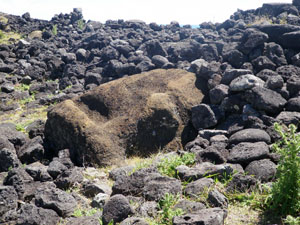 And every single tree on the island was eventually cut down - trees that were used to move the Moia statues from the quarry - Rano Raruke - where they were built, to the villages where they were erected. Trees, fibers for rope, human labor... all exploited in the quest for dominance, the obsession with appealing to the gods and honoring their tribal leaders. And the - desperation to survive on a tiny piece of earth where the human population outgrew the lands ability to sustain it. The people outgrew their 'planet' - they simply ran out of food and resources and as a consequence of their wars for dominance and survival, they destroyed everything that they once had.
And every single tree on the island was eventually cut down - trees that were used to move the Moia statues from the quarry - Rano Raruke - where they were built, to the villages where they were erected. Trees, fibers for rope, human labor... all exploited in the quest for dominance, the obsession with appealing to the gods and honoring their tribal leaders. And the - desperation to survive on a tiny piece of earth where the human population outgrew the lands ability to sustain it. The people outgrew their 'planet' - they simply ran out of food and resources and as a consequence of their wars for dominance and survival, they destroyed everything that they once had.
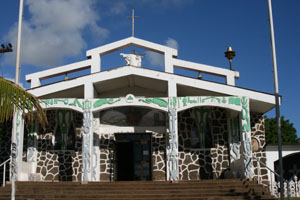 The 'discovery' of the island by Europeans was over a period of a couple centuries. First sighted by a Dutch explorer in 1722 on Easter Sunday (thus Easter Island). A brief landing and skirmish and no reason to stay (no supplies available for restocking) saw the Dutch leave within a week. A Spanish expedition in 1770 found the island, planted a flag, claimed the island for Spain, and then left. Four years later Captain Cook came to the island. The crew were sick and desperate for fresh water and supplies, but the islanders were also desperate. The ship soon left.
The 'discovery' of the island by Europeans was over a period of a couple centuries. First sighted by a Dutch explorer in 1722 on Easter Sunday (thus Easter Island). A brief landing and skirmish and no reason to stay (no supplies available for restocking) saw the Dutch leave within a week. A Spanish expedition in 1770 found the island, planted a flag, claimed the island for Spain, and then left. Four years later Captain Cook came to the island. The crew were sick and desperate for fresh water and supplies, but the islanders were also desperate. The ship soon left.
During the late 1800's Peruvian's were searching Polynesia for sources of slave labor (Peru had abolished slavery by then). Rapa Nui was a prime 'source' of human slaves since it wasn't under the protection of another country (such as French Tahiti). Over 2000 people were taken forcibly from the island to work the mines in Peru. Most of the people died in transit. A handful were eventually returned to Rapa Nui, but they brought back diseases such as small pox, and the remaining island population was further decimated. By the end of the 19th century only 111 native people survived.
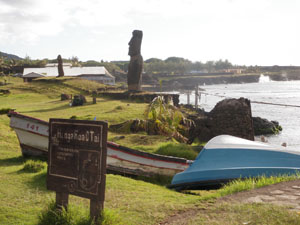 In 1883 Chile defeated Peru (and Bolivia) in the war of the Pacific, and Easter Island - Rapa Nui - was ceded to Chile. It was officially anexed. Chile had little interest in the island, there were no valuable resources, and in the early 1900's a Scottish/Chilean sheep and nitrate company, the Easter Island Exploitation Company, came to the island with the intent to raise sheep on the (now treeless) grasslands. The company herded all of the natives to the small harbor town, Hanga Roa, and kept them enclosed in the area by barbed wire perimeter fencing. Some of the older Rapa Nui still remember this time which lasted for generations, when they could not venture out on their own island.
In 1883 Chile defeated Peru (and Bolivia) in the war of the Pacific, and Easter Island - Rapa Nui - was ceded to Chile. It was officially anexed. Chile had little interest in the island, there were no valuable resources, and in the early 1900's a Scottish/Chilean sheep and nitrate company, the Easter Island Exploitation Company, came to the island with the intent to raise sheep on the (now treeless) grasslands. The company herded all of the natives to the small harbor town, Hanga Roa, and kept them enclosed in the area by barbed wire perimeter fencing. Some of the older Rapa Nui still remember this time which lasted for generations, when they could not venture out on their own island.
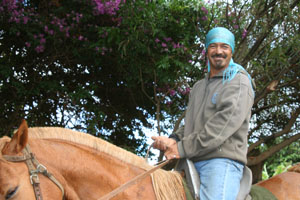 Today Rapa Nui is still a 'special territory' of Chile, sharing currency, language and some governmental authorities, but also has a degree of autonomy. Today only native Rapa Nui are allowed to own land, any outside development must be done through lease and contract, and the Rapa Nui are resentful and suspicious of outside influence. Tourism is becoming a major industry on the island (there is really no other significant industry) and the people want to keep as much control over this as possible.
Today Rapa Nui is still a 'special territory' of Chile, sharing currency, language and some governmental authorities, but also has a degree of autonomy. Today only native Rapa Nui are allowed to own land, any outside development must be done through lease and contract, and the Rapa Nui are resentful and suspicious of outside influence. Tourism is becoming a major industry on the island (there is really no other significant industry) and the people want to keep as much control over this as possible.
It is a very interesting place - a cultural mix of Polynesian and Spanish - food, language, culture - a desire to protect the native cultures and language, and a need to embrace the modern world for survival.
more later-
Steph
(Nirene - thanks for the photo!)
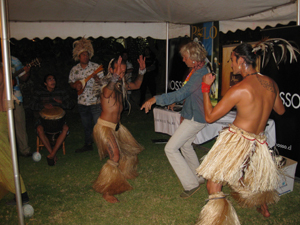
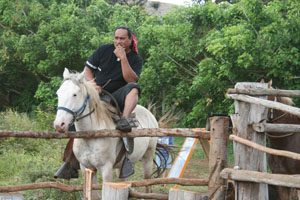 From everything I've seen and read and heard, this place is just now being discovered by tourists. It still feels very natural - the way it has been for decades. (tho as recently as 1960's the people were forced to live in a barbed wire enclosure and the "Easter Island Exploitation Company" - a Scottish/Chilean nitrate and sheep farming company, used the island as one big sheep pasture. The people were basically rounded up and confined to the area around Hauna Roa (the town/port) for several generations. The older islanders still talk about that time - where the sheep could come and go, but they couldn't. There's a fair amount of resentment by the natives. understandably. )
From everything I've seen and read and heard, this place is just now being discovered by tourists. It still feels very natural - the way it has been for decades. (tho as recently as 1960's the people were forced to live in a barbed wire enclosure and the "Easter Island Exploitation Company" - a Scottish/Chilean nitrate and sheep farming company, used the island as one big sheep pasture. The people were basically rounded up and confined to the area around Hauna Roa (the town/port) for several generations. The older islanders still talk about that time - where the sheep could come and go, but they couldn't. There's a fair amount of resentment by the natives. understandably. )I have to admit I never ever thought about actually 'going to Easter Island' - it was just one of those far away places with the ancient statues that stir the imagination, but ... actually go there? impossible. (ya never know!)
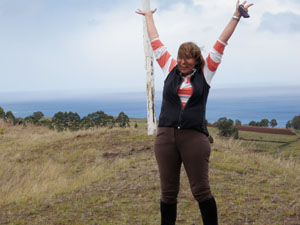 We went out to meet our horses this morning. There is a woman here from Zambia (born in England, now living in Africa) - she saw the EnduranceX ad on Endurance.Net - with a ride on Easter Island - and she made it happen. It was a dream of hers to go to Easter Island, since she saw a tv show on the island as a small child. Plus she's involved in endurance riding in Zambia and loves to ride. Zirene said "I had to go, to combine my dream and my passion" . That pretty much says it all!
We went out to meet our horses this morning. There is a woman here from Zambia (born in England, now living in Africa) - she saw the EnduranceX ad on Endurance.Net - with a ride on Easter Island - and she made it happen. It was a dream of hers to go to Easter Island, since she saw a tv show on the island as a small child. Plus she's involved in endurance riding in Zambia and loves to ride. Zirene said "I had to go, to combine my dream and my passion" . That pretty much says it all!
So we show up with riding gear, saddles in tow, to try out our horses. (I was thinking they had already chosen the perfect mounts for us - here, this is your horse, etc...) . So a big group of horses comes running into the yard, herded into the corral. A few hands are there grinning - and somebody says - "go pick your horse"! Yikes! They're milling around, bays, chestnuts, shod, not shod, just horses... I have no idea! I say "I want that one" - a big strong chestnut - and one of the vacqueros says... ah maybe no, very very strong.>Oh great! Well he looked very strong but I think that meant hard to control. So he said, here take this one . I looked at his eye - ok, then looked at his feet - hmmm not too great, barefoot - long toes flaring out , walls sort of busted up. Nope, I don't like his feet. Blank look... and then "ok take this one". Nice looking roany chestnut, and with shoes on his feet. I'm thinking that might be a good thing for this ride, so OK. 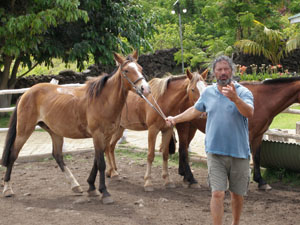
We tie him up, and Dinah has loaned me her saddle - a Reactor Panel saddle - with nice big knee rolls, comfy and secure. We put the saddle on him. They hand me the reins - and I noticed they are broken - basically english reins (short) with a broken buckle. Ummm....?? Steve had brought his own reins, so he gave me his horse's headstall with nice longer/intact reins, and he used his. Ok - we ready to take them out for a spin. Zirene has a nice buckskin, seems pretty quiet. I had a real hard time getting my horse to leave the other, he was determined to not go until they did. Hmmm.... but enough clucking and kicking and he seemed to at least move, though reluctantly.
We (Steve, Nirene and I) left the yard, onto the dirt road and Steve's horse had a melt down! He started galloping up the road, Steve is such a skilled rider that he stayed with him, deep in the saddle, but I had my heart in my throat, this was not good. He sort of got him under control, somehow back to the stable. I had gone in saying 'he needs a different horse!' I may have looked a bit panicked... but they grabbed his horse's headstall and held the horse for Steve to get off, and gave him another horse!
We tried again, and this time it went much better. My horse wanted to canter off, I think he thought that was what he was expected to do. We found a nice grassy area (overlooking the pacific, moai in the background... one almost gets used to it!) and did some circles, stops, trot, walk - figuring out what the horses knew, what we had. Then we went walking through the various moaii heading towards town. Past loose herd of horses - one very macho stallion and his herd, the stallion was dragging a rope. (he showed up later at Pantu's place (the stable) with his little herd in tow - galloping in through the driveway, grabbing a quick drink of water at the corral trough, and then Pantu chased them back out. pests!).
Nice leisurely walk, relaxed horses, relaxed riders.
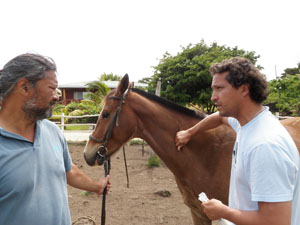 When we got back and unsaddled, a vet was there - researcher from University at Santiago - studying the horses here. Apparently somebody had the great idea to introduce a plant (lupine family) to help stabilize the soil. The plant is toxic to horses - alkaloids - and many of the horses on the island are getting sick. Affects their digestive systems, eventually liver failure. So many of the horses we saw on our drives were thin, listless (they become neurologically compromised as well) with bad coats, gaunt - these were apparently suffering from eating the plants.
When we got back and unsaddled, a vet was there - researcher from University at Santiago - studying the horses here. Apparently somebody had the great idea to introduce a plant (lupine family) to help stabilize the soil. The plant is toxic to horses - alkaloids - and many of the horses on the island are getting sick. Affects their digestive systems, eventually liver failure. So many of the horses we saw on our drives were thin, listless (they become neurologically compromised as well) with bad coats, gaunt - these were apparently suffering from eating the plants.
I just finished lunch, sitting here at a nice little outdoor cafe w good music playing, doing email, uploading a gallery... and - now it's time for the polo game! (the first one on the island - should be very interesting to see what these guys can do with the island horses). then meeting and party at Pantu's stable this evening. then tomorrow we ride!
later,
Steph
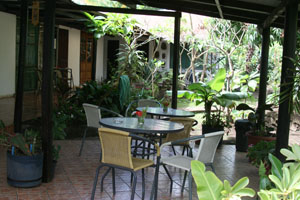 I landed at a sweet little hotel - Hotel Uka - or 'Martin & Anita's' if you ask a local. Not too fancy, but pleasant and clean and very friendly. I'm renting a car from them - they also have bikes, scooters, whatever. Business on the island is very laid back - still not much in the way of paperwork, contract, etc. Lots of dealings by talk, by friendship. Pleasantly innocent feeling.
I landed at a sweet little hotel - Hotel Uka - or 'Martin & Anita's' if you ask a local. Not too fancy, but pleasant and clean and very friendly. I'm renting a car from them - they also have bikes, scooters, whatever. Business on the island is very laid back - still not much in the way of paperwork, contract, etc. Lots of dealings by talk, by friendship. Pleasantly innocent feeling.
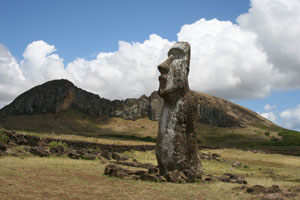 The locals, the Rapa Nui, are very distinctive. Tall in stature, the youth seem very athletic. Smiling, laid back, no worries. There are tourists - but nothing overwhelming. The island seems to absorb them easily. Most of the touring I've done I've been alone at the most incredible places - are maybe a couple other people coming through. Very spiritual here. The moai (statues) are unfathomable - huge, beautiful - and endearing! They feel more like friendly guardians than threatening guards. I'll try to write more about them when I get a chance - the how/why/when - some of which is purely theoretical (still un-answered questions) - some history they (anthropoligists, archaeologists) feel pretty certain about.
The locals, the Rapa Nui, are very distinctive. Tall in stature, the youth seem very athletic. Smiling, laid back, no worries. There are tourists - but nothing overwhelming. The island seems to absorb them easily. Most of the touring I've done I've been alone at the most incredible places - are maybe a couple other people coming through. Very spiritual here. The moai (statues) are unfathomable - huge, beautiful - and endearing! They feel more like friendly guardians than threatening guards. I'll try to write more about them when I get a chance - the how/why/when - some of which is purely theoretical (still un-answered questions) - some history they (anthropoligists, archaeologists) feel pretty certain about.
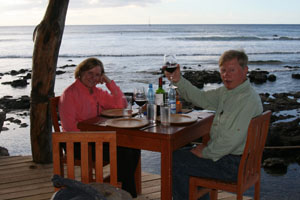 I've been having a great time with Steve and Dinah - they are so pleasant, and up for any adventure! We had a nice dinner at a restaurant - La Kaleka - right on the point of the harbour at Hauna Roa (the only town on the island). Enjoying a meal and a bottle of wine and a blazing sunset - as the surfers catch the waves, the fishing and dive boats going in and out. Todo bien.
I've been having a great time with Steve and Dinah - they are so pleasant, and up for any adventure! We had a nice dinner at a restaurant - La Kaleka - right on the point of the harbour at Hauna Roa (the only town on the island). Enjoying a meal and a bottle of wine and a blazing sunset - as the surfers catch the waves, the fishing and dive boats going in and out. Todo bien. 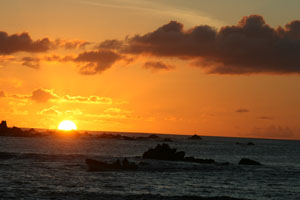
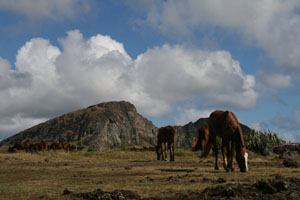 I joined them yesterday morning for a tour of the quarry - Rano Raruka - where they built the moai out of tuff - sedimentary stone formed from volcanic ash. Absolutely amazing - one of the most amazing feats of art and engineering you can imagine. They carved them all here, and then transported them to their tribal villages around the island. These things are huge and weight tens of thousands of tons - they used palm trunks and ropes to move them around. The moai that are still at the quarry are the last ones made - that were never finished or transported to their destination. Nobody knows exacly how/why the age of the moai ended!
I joined them yesterday morning for a tour of the quarry - Rano Raruka - where they built the moai out of tuff - sedimentary stone formed from volcanic ash. Absolutely amazing - one of the most amazing feats of art and engineering you can imagine. They carved them all here, and then transported them to their tribal villages around the island. These things are huge and weight tens of thousands of tons - they used palm trunks and ropes to move them around. The moai that are still at the quarry are the last ones made - that were never finished or transported to their destination. Nobody knows exacly how/why the age of the moai ended!
I finally met up with Luis - saw him on the street yesterday evening, and found him at the stable this morning. He's got thing well under control. There will be 20 riders in the Sunday race - from Chile, Argentina, Namibia and USA - and of course the locals! I'm not sure of the exact disance we'll be riding - I think around 60km - enough to cover most of the island. We'll be riding through the National Park - past the moai and ancient villages and along the coast. Can't wait!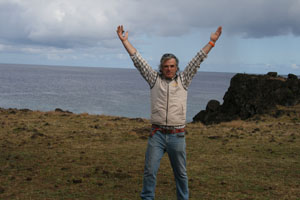
I met the stable owner today too, and told him please - we want nice horses! - to enjoy, not to race. He totally gets it (keep the journalist safe and happy and everybody is happy :) So I'm less anxious about what kind of ride it will be. The horses here are typical south american - gaucho style - horses. They walk, or they lope. I've never seen anybody trotting! Steve and Dinah brought their own saddles - a good move - I'll have to wait and see what I get. The Chilean saddles are very different - high padded pommels - deep seats - they put the weight back, almost like a chair seat. Seems to work good for a canter tho-
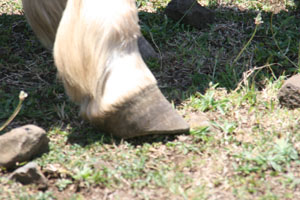 And the horses are all barefoot! (actually the vaqueros are barefoot too :). This is some of the stoniest land I've seen - the island is basically the highest point in an underwater mountain chain of volcanic eruptions. It's a rock island. I haven't seen the stable horse's feet yet, but I tried to get close to some of the feral-ish horses and their feet are amazing!! I can't wait to look at the stable horses more closely - I'll take some photos. This would be a fun place to study feet - the horses have never been shod, graze on the rockiest places you can imagine - sharp volcanic rock - plus they are ridden - a lot. Should be a lot of similarities with the western USA mustangs.
And the horses are all barefoot! (actually the vaqueros are barefoot too :). This is some of the stoniest land I've seen - the island is basically the highest point in an underwater mountain chain of volcanic eruptions. It's a rock island. I haven't seen the stable horse's feet yet, but I tried to get close to some of the feral-ish horses and their feet are amazing!! I can't wait to look at the stable horses more closely - I'll take some photos. This would be a fun place to study feet - the horses have never been shod, graze on the rockiest places you can imagine - sharp volcanic rock - plus they are ridden - a lot. Should be a lot of similarities with the western USA mustangs.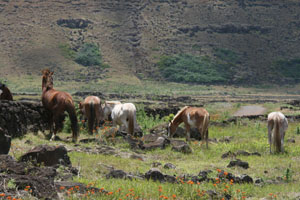
So - I'm going to go get a pizza now- and maybe figure out something to do with S/D this afternoon.
later,
Steph
Well, that was a really really long trip from Malaysia to Easter Island. It would have been shorter to go east across the Soutn China Sea, to the Pacific, but I had to go back west to pick up the LAN flight from Santiago. Around 40 hours total air time... plus connections. Three days of travel. I had decent flights, aisle or exit row seats, the worst part was the TWO HOURS it took me to get in and out of LAX airport. long long lines at passport, customs, security. pretty nasty. But the flights were fine - I watched a lot of movies (Robert Duvall is great in Get Low), read a good book - House Rules (family with autistic boy trapped in murder/legal intrigue).
 And today Sunday November 14 (I had to ask!) I landed on Easter Island, Isle de Pascua, Rapa Nui, El Ombligo del Mundo (the bellybutton of the world), the western most island of Polynesia. OMG I haven't been this excited on landing in a new place in a long time. This little island, population around 4000 I think, is the most geographically isolated, remotest place in the world. I watched a nice video on the plane, giving a taste of the history, culture, etc. The native population went from several thousand at its peak to only 111 individuals.
And today Sunday November 14 (I had to ask!) I landed on Easter Island, Isle de Pascua, Rapa Nui, El Ombligo del Mundo (the bellybutton of the world), the western most island of Polynesia. OMG I haven't been this excited on landing in a new place in a long time. This little island, population around 4000 I think, is the most geographically isolated, remotest place in the world. I watched a nice video on the plane, giving a taste of the history, culture, etc. The native population went from several thousand at its peak to only 111 individuals.
The native people basically self-destructed - population pressure, territorial battles, canibalism... and then once the island was discovered (in the 1700's I think) much of what was left of the people succumbed to western diseases, against which they had no immunity. The people were driven by construction and placement of the moai statues. And over the span of about 7 centuries, as each tribe tried to erect the grandest stone statues - the island was deforested - they used logs to move the massive stones from the quarries to their places along the coast. (I highly recommend the movie 180 Degrees South - it's mostly a Patagonia and mountain climbing story, but has a nice section on Easter Island too. )
I'm here thanks to EnduranceX (www.endurancex.com) - Luis Enrique Opazo's brilliant 'extreme endurance riding' aventure business. Last year he brought me to the race at Torres del Paine National Park in Patagonia. My mission is to tell the world about his endurance rides in exotic places. I can do this!!

So in typical Steph style, I put off thinking about the Easter Island trip until I got to Easter Island. I was busy with the Owyhee rides, then took off to Malaysia, and I figured I'd just figure everything out once I landed. I just assumed Luis (Guyo) was keeping track of my arrival and would have somebody at the airport to meet me, but I was a few days early... so wasn't sure. Oops. Steve and Dinah Rojek were on the flight with me - I had mentioned this ride to them and Steve's exact words were 'sure! what a hoot!'. So we'll be on the island together, its really nice to have friends here.
They had already made reservations at a hotel (in typical Steve and Dinah style planning well in advance :) so we parted at the airport - as they got into their hotel van I was still standing outside the airport with my suitcase wondering what my next move would be - a nice local was trying to help me, I was hoping to contact Luis and ask him where I should go - the fellow offered to take me to their place - with WiFi - and a room if I needed it (if I couldn't get in touch with Luis). I really had no idea what I was going to do (and so so tired) but that seemed like a reasonable option. As Steve and Dinah drove off Steve's words were 'If it was anybody but you, I'd be worried!'. :)))
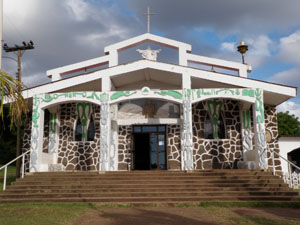
o here I am at the Hotel Uka http://www.hoteluka.com/ingles.html - a little family style hotel about a ten minute walk from the ocean, right next to an old stone church. I have WiF! and a glass of wine (a bottle of red Chilean wine that I bought at a little market for 5000 pesos (that's about $10). and it's quite good. It's 10pm, I had a wonderful walk along the coast saw lots of Moia along a very beautiful coastline, waves crashing against the rocks, lush tropical vegetation, a long grassy park with paths along the statues, horses grazing in their shadows).
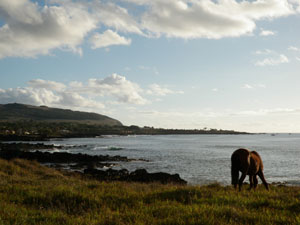 There were some tourists wandering around, plenty of locals on surfboards and riding their horses along the street. Dozens of fun little shops were luring me in!! Ican't wait to check out the local artisans. Dinner was some very good pizza at a little cafe, and am now sitting here on a little round plastic table and chair outside my room, it's getting pretty cool, there are a couple of cats to keep me company. All's well! (as I'm writing this I hear somebody riding down the dark street, clop clop, on horseback - there are horses everywhere).
There were some tourists wandering around, plenty of locals on surfboards and riding their horses along the street. Dozens of fun little shops were luring me in!! Ican't wait to check out the local artisans. Dinner was some very good pizza at a little cafe, and am now sitting here on a little round plastic table and chair outside my room, it's getting pretty cool, there are a couple of cats to keep me company. All's well! (as I'm writing this I hear somebody riding down the dark street, clop clop, on horseback - there are horses everywhere).
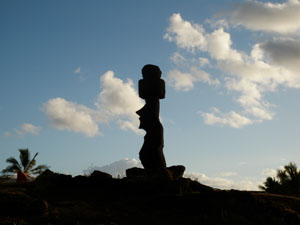
Steph